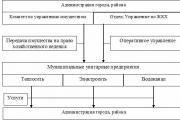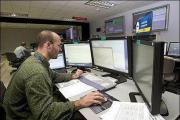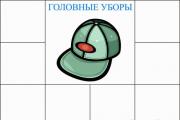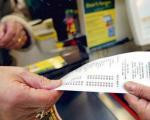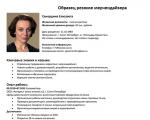20.09.2018
Optimizing business operations is a hot topic for all shared service centers (SSCs), as improving operational efficiency is one of the key goals of establishing a SSC. The main areas of optimization in the Multifunctional Shared Service Center of PJSC Rostelecom (MF SSC) include the following:
- structural changes;
- automation and digitalization;
In this article I will talk in detail about the events that are carried out within the framework of these areas in the MF SSC of PJSC Rostelecom.
Structure and functionality of MF SSC
MF SSC was created in 2013 and is currently represented by the following divisions that provide services to internal clients (company branches and subsidiaries):
- Accounting and reporting centers located in three main locations: Nizhny Novgorod, Voronezh and Novosibirsk;
- HR Center: Nizhny Novgorod and Novosibirsk;
- Accounts receivable collection center: Nizhny Novgorod and Novosibirsk;
- Treasury Operations Center (Nizhny Novgorod);
- IT support centers with a main location in Moscow and remote workplaces in several regions of the Russian Federation.
The number of sites in each direction is determined, first of all, by the scale of activity of PJSC Rostelecom, as well as by the significant time difference between the time zones of the serviced regions (from Sakhalin to Kaliningrad). Also in the structure of the MF SSC, a special place is occupied by the Service Management Department, whose functions include design and analytical activities, as well as the methodology of business processes of the Shared Service Center.
If we move on to the accounting function, it was one of the first centralized in the MF SSC and the strategy for its development can be illustrated as follows:

At the initial stage of development, the primary task was to centralize and standardize business processes in the SSC functionality for the main customer - PJSC Rostelecom. Then MF SSC began working in the direction of multifunctionality, expanding the range of business units served (subsidiaries) and accepting related transactional functionality from the business. I will talk in detail about cost reduction vectors and digitalization functions below.
As for entering the foreign market, this area is now a priority for MF SSC and we are taking the first steps within this development vector.
Structural changes in the MF SSC
After the completion of the first stage of centralization, when the main sites for locations of the accounting function were created, the question arose about further optimization of the organizational structure of our division. And here we have identified two directions:
- SSC in SSC;
- Internal benchmarking.
“SSC in SSC” implies the centralization of more complex functions of all Accounting Centers on the leader site (brownfield only) while simultaneously reducing their cost. Such structural changes include:
- centralization of payroll accounting functionality based on the Voronezh Accounting and Reporting Center;
- liquidation of the Yekaterinburg Reporting Accounting Center with the transfer of functionality to two locations: Nizhny Novgorod and Voronezh (at the start of the activities of the MF SSC, 4 accounting centers were created, covering the regions of Rostelecom PJSC by time zone);
- centralization in Nizhny Novgorod of the tax function (Tax Department) and the function of reporting (Reporting Department) according to RAS and IFRS standards. In this case, the following important details should be noted regarding the scope of functionality of these divisions:
- The Tax Department of the MF SSC fully compiles and submits to the tax authorities reports on all taxes, including federal ones (income tax and value added tax);
- The reporting department fully generates and provides users with reporting in accordance with Russian standards and generates all transformational adjustments in accordance with IFRS (consolidation of IFRS reporting is carried out at the level of the company's Corporate Center).
By “internal benchmarking” we mean changes in which the simplest and most algorithmic functions are centralized at sites with the lowest costs (possibly greenfield). We are looking for locations with a cheaper labor market (at least 20% of the existing ones) and analyzing business opportunities to provide us with free space at the lowest cost to bring them up to MF SSC standards.
At the moment we have the following experience in this area:
- creation of a site in Ulyanovsk (greenfield), where simple and transparent functionality for accounting for utility costs and rent was centralized. The project started in February 2016, now there are more than 180 employees serving all regions of PJSC Rostelecom;
- creation of a site in Saransk (greenfield), where the functionality for writing off inventory items is currently centralized (the project started in March 2018).
The above activities gave a cumulative effect of operating savings of more than 200 million rubles. in year.
Automation and digitalization
To begin with, it should be noted that the development of the main information systems of the Company, in which the employees of the Accounting and Reporting Center work, is carried out by the Competence Center for Corporate Management Systems (CCMS), a division of the MF SSC. And since we are the main Customer for the development of ERP (Oracle E-Business Suite), this fact provides an undoubted synergistic effect. It should be noted that all procedures for updating Information Systems are regulated, each application is analyzed for its feasibility and economic efficiency.
In addition to full process automation, the so-called “small automation” approach is actively used. Employees independently, or with the involvement of TsKKSU resources, create macros used to prepare boot templates or carry out analytical and control procedures.
Transition to external EDI
A separate important digitalization project is the transition to electronic document management (EDF). At the same time, the company is actively developing both external and internal electronic document flow.
Sending documents to legal entity subscribers under concluded contracts for communication services via electronic channels was the first step towards the transition to paperless document flow. This project started in 2012. As a result, the costs of printing and delivering documents have been significantly reduced, and the time it takes for the counterparty to receive them has been reduced. At the moment, more than 30% of payment documents for legal entity subscribers are sent to PJSC Rostelecom with an electronic digital signature.
The next stage, starting in 2016, was to introduce external incoming document flow. At the same time, at the start of the project, we understood that the number of systems that business employees work with is quite large and adding another one (the personal account of a special EDI operator) would not add motivation to key users. Therefore, the task was initially set to integrate the systems of special EDI operators with the ERP of Rostelecom PJSC: the document from the LC automatically enters Oracle and goes through all stages of approval and signing there.
At the moment we are working with two operators: “Tensor” and “Kontur” and receive about 16% of incoming primary documents through electronic channels.
The advantages of switching to electronic document management are obvious:
- reduction of time and labor intensity when signing, collecting and processing documents;
- timely and high-quality reflection in accounting of expenses/receipts of assets;
- minimizing/eliminating errors (details, signatures) made by counterparties when generating documents and leading to the requirement to replace documents;
- no risk of losing the original document;
- reducing archiving costs.
It should be noted that the market in this direction cannot be called developed, so we work with each counterparty individually, and, if necessary, provide advice on the transition to EDI.
Internal EDI
It should be noted right away that PJSC Rostelecom is a certified certification center, which provided the prerequisites for the digitalization of internal primary documents (documents that are signed exclusively by company employees) in the ERP environment. Moreover, the signature is cloud-based and does not require the use of external media. An electronic digital signature can be obtained by any user if they have the necessary authority (power of attorney, order) within one business day from the moment the request is placed.
The drivers for the implementation of internal EDI were the following factors:
- significant volumes of internal documents that must be signed on paper and scanned;
- the remoteness of the signatories from the place of origin of the business transaction (and from each other in the presence of several signatories, which is due to the scale of the company’s activities) - as a consequence, significant deadlines for signing the document and its untimely reflection in accounting.
The introduction of internal electronic document management solves these problems, so the business was extremely interested in the project. The project started in 2016. During implementation, we received maximum support from key users/signatories of documents, which allowed us to transfer the maximum number of internal primary documents to digital in the shortest possible time. The IT component of the project was fully implemented by the Competence Center for Corporate Management Systems of the MF SSC.
At the moment, the following primary documents are generated and signed in electronic format.
- acts on write-off of materials (MPZ-85);
- requirement-invoice (M-11);
- receipt order (M-4);
- cash documents (receipts, expenditure orders, cash book);
- personal salary account;
- invoice issued by the tax agent;
- act on acceptance and transfer of fixed assets (OS-1).
Work on transferring to internal electronic document flow continues. The remaining forms for fixed assets (OS-2, OS-3, OS-4), expense reports, and inventory documents are in the active stage of development.
After transferring all planned documents into electronic format, we optimize labor costs by 180 FTE. Currently, we have implemented EDI for 72% of internal primary documents.

The qualitative and economic effect of this project can hardly be overestimated:
- the gap from the date of a business transaction to the moment it is recorded has been significantly reduced;
- Due to a radical change in the logistics of the document, an economic effect of at least 70 million rubles was achieved. per year (labor costs for printing, scanning, costs for moving and storing the document).
Robotization
Since the end of 2017, we began to systematically work in the direction of robotization. At the first stage, an agreement was concluded with an external contractor, together with whom we selected the first processes for robotization: by the end of the year we plan to robotize at least six SSC business processes in various areas of activity. At the same time, we are developing a scoring model for ourselves, which will allow us to select processes that are subject to robotization as efficiently as possible in the future. At the same time, we are building up the competence to create robots in the Central Committee for Computer Science and Technology with the aim of gradually eliminating the services of an outsourcer.
MF SSC plans to robotize at least 20% of all processes of transaction divisions by the end of 2019.
Implementation of chatbots
Along with robotization, we use such a tool as chatbots. An example is the internal customer service for working with vacations. With its help, a Rostelecom employee can check the vacation balance, create a vacation request, and make changes to the vacation schedule in agreement with his manager, who is also connected to the service. Thus, we have relieved the workload of our HR call center and reduced the paperwork flow for employees using this interface. In this case, all data is integrated into the ERP system. We plan to increase the number of services provided through the chatbot: we are considering the possibility of employees ordering personal income tax certificate 2, salary certificates, copies of work books, etc.
The risks of such projects are the legitimacy of using messengers in the Russian Federation. So, the chatbot started its work on the basis of Telegram. After restricting access, he was transferred to the Viber environment.
To mitigate the above risks, we plan to create our own mobile application to host protected personal data and provide our internal client with a wider range of services.
In conclusion, it should be noted that the company's optimization processes are supported by a corporate culture aimed at innovation. PJSC Rostelecom has a production system within which there are many different activities: Ideas Portal, Lean laboratories, etc.

The SSC is the undisputed leader in terms of the number of clients and implemented ideas related to process optimization. In the structure of the company, our number is less than three percent, but 40% of all ideas posted on the portal are SSC ideas.
, director of the accounting and reporting center of PJSC Rostelecom
About company
PJSC Rostelecom is Russia's largest provider of digital services and solutions, present in all market segments and covering millions of households in Russia.
The company occupies a leading position in the Russian market of broadband access and pay television services: the number of subscribers of broadband access services exceeds 13.0 million, and Rostelecom pay TV - 10.0 million users, of which 5.1 million watch the unique federal product “Interactive TV” . The number of Rostelecom mobile subscribers exceeds 1 million.
Rostelecom is the undisputed leader in the telecommunications services market for Russian government agencies and corporate users at all levels.
The company is a recognized technology leader in innovative solutions in the field of e-government, cloud computing, healthcare, education, security, housing and communal services.
Send your good work in the knowledge base is simple. Use the form below
Students, graduate students, young scientists who use the knowledge base in their studies and work will be very grateful to you.
Posted on http://www.allbest.ru/
INTRODUCTION
Analysis of the financial condition is carried out not only by the managers and relevant services of the enterprise, but also by its founders and investors - in order to study the efficiency of the use of resources; banks - to assess lending conditions and determine the degree of risk; suppliers - to receive payments on time; tax office - to fulfill the plan for the receipt of funds into the budget, etc. In accordance with this, analysis is divided into internal and external.
Internal analysis is carried out by enterprise services, its results are used for planning, monitoring and forecasting the financial condition of the enterprise. Its goal is to ensure a smooth flow of funds and place own and borrowed funds in such a way as to obtain maximum profit and avoid bankruptcy. External analysis is carried out by investors, suppliers of material and financial resources, and regulatory authorities based on published reports. Its goal is to establish the possibility of a profitable investment in order to ensure maximum profits and eliminate losses.
Financial statements are essentially the “face” of the company. It is a system of generalized indicators that characterize the results of the financial and economic activities of an enterprise. Financial reporting data serve as the main sources of information for analyzing the financial condition of an enterprise. Indeed, in order to make a decision, it is necessary to analyze the availability of financial resources, the appropriateness and efficiency of their placement and use, the solvency of the enterprise, its financial relationships with partners. Evaluation of these indicators is necessary for effective management of the company. With their help, managers plan, control, improve and improve the direction of their activities.
The relevance of financial reporting analysis is determined by the transition to market relations. The internal reason for the need for such an analysis is due to the fact that in market conditions, enterprises operate on the principles of self-sufficiency (the enterprise must cover expenses with income) and self-financing (income must be sufficient not only to cover costs, but also to make a profit), due to This means management must know the size of profit, the factors influencing it, cash flows, property dynamics, and level of profitability. Another reason is that businesses independently establish partnerships with suppliers, so before establishing such a relationship with an organization, external users study its financial situation.
The main objectives of analyzing the enterprise's FS are:
General assessment of FS and factors of its change;
Studying the correspondence between means and sources, the rationality of their placement and the effectiveness of their use;
Determination of liquidity and financial stability of the enterprise;
Compliance with financial, settlement and credit discipline.
Open Joint-Stock Company for Intercity and International Electrical Communications OJSC Rostelecom is the largest fixed-line communications operator in the Russian Federation. The company owns a modern digital network covering almost the entire territory of the country.
1. Brief description of the enterprise OJSC Rostelecom
The company was founded on September 23, 1993 in accordance with the Law of the Russian Federation No. 1531-1 “On the privatization of state and municipal enterprises in the Russian Federation” dated July 3, 1991 and with the State Program for the Privatization of State and Municipal Enterprises of the Russian Federation for 1992, approved by a resolution of the Supreme Council of the Russian Federation No. 2980-1 dated July 11, 1992.
The founder of the Company is the State Committee of the Russian Federation for State Property Management.
The Company is registered in the Unified State Register of Legal Entities under number 1027700198767, the Company is assigned a taxpayer identification number 7707049388. The list of activities carried out is determined by the Charter of the Company.
The Company includes: Corporate center, macro-regional branches, representative office and regional branches.
Macro-regional branches are separate divisions of the Company, located outside the location of the Company and performing part of the Company’s functions, including representative ones, within the coverage area of the Macro-regional branch.
Regional branches are separate divisions of the Company, located outside the location of the Company and performing part of the Company’s functions, including representative ones, in the area of operation of the regional branch.
A representative office is a separate division of the Company, located outside the location of the Company, representing the interests of the Company and their protection. For the purposes of this provision, the corresponding macro-regional branch and regional branches together constitute a macro-region.
The representative office, macro-regional branches and regional branches of the Company (hereinafter referred to as separate structural divisions) operate on the basis of the Charter of the Company, Regulations on Macro-regional/regional branches, Regulations (temporary regulations) on the representative office. Directors of Separate structural divisions act on the basis of powers of attorney issued to them.
Relations between the Corporate Center and the Separate structural divisions of the Company are built on the basis of administrative subordination.
OJSC Rostelecom is the main national long-distance operator in Russia and the only company that has its own extensive network of high-quality digital channels and paths throughout Russia. Rostelecom will provide you with high-quality long-distance communications with any region of the Russian Federation, and international communications with any country in the world.
The Company in its organizational and legal form is an open joint stock company. The company was created for an unlimited period of activity.
The legal status of the Company, the procedure for its activities, reorganization and liquidation, as well as the rights and obligations of the Company's shareholders are determined by the Civil Code of the Russian Federation, the Federal Law "On Joint Stock Companies", other Federal laws, other legal acts of the Russian Federation adopted by the relevant government bodies within their powers, as well as this Charter.
Company objectives:
· the most complete satisfaction of customer needs for communication services;
· introduction of advanced service principles;
· comprehensive development based on modern technologies;
· increasing the level of profitability and capitalization of the company.
The main strategic goal of Rostelecom is the creation, development and improvement of a unified transport telecommunications environment both within Russia and abroad to ensure the transmission of information flows from regional telecom operators, central and regional television and radio broadcasting companies, and government bodies.
The Company uses unified forms of accounting for primary accounting documentation approved by the State Statistics Committee of the Russian Federation.
When registering financial and business transactions for which unified forms are not provided, independently developed forms of primary accounting documents are used, containing the mandatory details established by the Federal Law “On Accounting” dated December 6, 2011 No. 402-FZ.
The right to sign primary accounting documents, the rules and procedures for organizing document flow, the document flow schedule, and the technology for processing primary accounting documents are regulated by internal organizational and administrative documents, which are developed independently by structural divisions.
2. ANALYSIS OF THE BALANCE SHEET OF OJSC Rostelecom
2.1 Analysis of balance sheet liabilities
The liability side of the balance sheet allows you to determine what changes have occurred in the structure of equity and borrowed capital, how much long-term and short-term borrowed funds have been attracted into the enterprise’s circulation, and from what sources. The financial position of the enterprise and its stability largely depend on how optimal the ratio of equity and debt capital is. It is believed that the higher the share of equity capital, the lower the risks for both the owners and creditors of the enterprise.
An assessment of the structure of the balance sheet liabilities is presented in Table 1.
Table No. 1 “Structure of the enterprise’s sources of funds”
|
|
Name of aggregated liability sections
|
Index
|
Change in indicator
|
|
|
|
absolute,
|
relative
(spec. weight), %
|
|
|
|
|
start of reporting
|
at the end of the reporting period
|
report
|
at the end of the reporting period
|
absolute, thousand rubles (gr.3-gr.2)
|
relative, %
(gr. 5-gr. 4)
|
|
|
|
|
|
|
|
|
|
|
|
1. Sources of own funds (line 490 of the balance sheet)
|
|
|
|
|
|
|
|
|
2. Borrowed funds (sum of lines 590, 690 balance)
|
|
|
|
|
|
|
|
|
Balance currency (balance line 700)
|
|
|
|
|
|
|
|
|
At this enterprise, own funds at the end of the period increased by 8270 tr. The share of own sources in the overall structure of the enterprise's sources of funds at the beginning of the reporting period was 95.8%, respectively, borrowed sources - 4.2%. In the overall structure of the enterprise's sources of funds, there was a decline in the share of borrowed sources by the end of the period under review by 3.1%. This is explained by the fact that at the end of the period the company began to attract more borrowed funds to cover expenses. The share of borrowed sources at the end of the period was 7.3%, therefore in the overall structure there was an increase of 3.1%. Borrowed funds increased compared to the beginning of the period by 2275 thousand rubles. A high share of equity capital indicates that the company almost does not use borrowed funds to cover obligations. The balance sheet currency for the reporting period increased by 10,545 tr. and amounted to 82,323 at the end of the period, which was due to an increase in the size of the enterprise’s own and borrowed sources of funds by the end of the reporting period. The increase in currency over the period under review indicates an increase in economic turnover; the specific reason for this increase is the increase in retained earnings. The high share of equity capital at the end of the period is explained by the fact that the enterprise’s balance sheet contains a large number of non-current assets, which must be covered by equity capital, since the turnover rate of non-current assets is low and the return of funds invested in these assets is slow. The high share of own sources in the overall structure of the enterprise’s sources of funds is the result of the stable operation of the organization: the presence of profit, rising costs.
Further analysis should identify the main sources that the enterprise uses for active operations, as well as the structure of sources and structural shifts in dynamics. To do this, let’s take a closer look at each of the sources. We begin the analysis by studying the structure of borrowed funds, table No. 2.
Table No. 2 “Borrowed funds”
|
|
Source
|
Index
|
Change in indicator
|
|
|
|
absolute,
|
relative
(structure), %
|
|
|
|
|
beginning of the reporting period
|
end of the reporting period
|
|
|
absolutely,
thousand roubles. (gr. 3-
|
structures,
(gr. 5 - gr. 4)
|
structure of changes in sources, %
(gr. 6/total gr. 6)
|
|
|
|
|
|
|
|
|
|
|
|
|
Accounts payable, including:
|
|
|
|
|
|
|
|
|
|
suppliers and contractors
|
|
|
|
|
|
|
|
|
|
debt to the organization's personnel
|
|
|
|
|
|
|
|
|
|
debt to the government extra-budgetary funds
|
|
|
|
|
|
|
|
|
|
debt on taxes and fees
|
|
|
|
|
|
|
|
|
|
other creditors
|
|
|
|
|
|
|
|
|
|
Debt to participants for payment of income
|
|
|
|
|
|
|
|
|
|
|
|
|
|
|
|
|
|
|
|
Having carried out an analysis of borrowed funds, we see that the company does not use long-term liabilities at all. It is obvious that the company uses exclusively short-term sources, which is assessed negatively, since they are the most expensive. The company's short-term liabilities are its accounts payable. At the beginning of the period it was 2724 tr., at the end of the period it increased by 2250 tr. and amounted to 4974 tr. The main component of accounts payable, both at the beginning and at the end of the reporting year, was debt to suppliers - 44.8% at the beginning of the period and 57.3% at the end of the period. At the beginning of the year, the debt amounted to 1,356 thousand rubles. and at the end of the period 3059t.r. Note that at the end of the period the debt increased by 12.5% (or by 1,703 tr). In the overall structure, the debt amounted to 73%. This indicates that the company will not transfer funds to it on time for the delivered values (work performed, services rendered). On the one hand, this is a positive thing, since this debt is the least dangerous for the enterprise due to the absence of strict payment standards. On the other hand, the presence of a large debt to suppliers and contractors will reduce the business reputation of the enterprise. Also, a large share falls on the debt to the organization’s personnel and amounts to 28.7%, but by the end of the period this debt is reduced by 11.2% and amounts to 17.5, which is assessed positively. The debt on taxes and fees at the end of the period amounted to 17.8%, which increased by 4.9% compared to the beginning of the period. In the overall structure, debt amounted to 24%. The smallest share is debt to state extra-budgetary funds and amounts to 1% at the end of the period. All this indicates a relatively stable policy of the enterprise in borrowing funds through accounts payable. The organization can be given recommendations: pay suppliers on time, draw up an accounts payable budget, develop a system of indicators characterizing both quantitative and qualitative assessment of the state and development of relations with the company’s creditors and accept certain values of such indicators as planned. It is also necessary to reconcile these values with the accounts receivable, taking into account that the accounts receivable budget has already been drawn up.
The next stage of source analysis is the analysis of equity capital. The analysis is presented in Table No. 3.
Table No. 3 “Sources of own funds”
|
|
Source
|
Index
|
Change in indicator
|
|
|
|
absolute,
|
relative
(structure), %
|
|
|
|
|
start of reporting
|
end of the reporting period
|
at the beginning of the reporting period (column 2/total of group 2)
|
at the end of the reporting period (group 3/total group 3)
|
absolutely,
thousand roubles. (gr. 3-
|
structures, % (gr. 5-gr. 4)
|
structure
changes
sources, %
|
|
|
|
|
|
|
|
|
|
|
|
|
1. Authorized capital
|
|
|
|
|
|
|
|
|
|
3. Additional capital
|
|
|
|
|
|
|
|
|
|
4. Reserve capital
|
|
|
|
|
|
|
|
|
|
5. Retained profit (uncovered loss)
|
|
|
|
|
|
|
|
|
|
|
|
|
|
|
|
|
|
|
|
Having analyzed the sources of the enterprise's own funds, we note that at the beginning of the period they amounted to 68,722 thousand rubles, and at the end - 76,992 thousand rubles, therefore, there was an increase of 8,270 thousand rubles. The amount of the authorized capital at the beginning and end of the period did not change and amounted to 300 tr., which is assessed positively (any adjustments to the size of the authorized capital (additional issue of shares, reduction of the par value of shares, making additional contributions, accepting a new participant, joining part of the profit, etc. .) are allowed only in cases and in the manner provided for by the current legislation and constituent documents.). The share of the authorized capital at the beginning of the period was 4.3%, and at the end 3.8%. Its share in its own sources decreased due to an increase in retained earnings. The additional capital of the organization also did not change and amounted to 20,402 tr. and has a share of 26.4%, which is 3.2% less than at the beginning of the period. This is due to an increase in retained earnings in the structure of own sources. The organization's reserve capital also remained unchanged and amounted to 75 tr, the share in the overall structure of sources decreased by 0.1%. This means that the company did not use reserve capital to cover losses. The organization's retained earnings at the beginning of the period amounted to 47,945 rubles. and at the end - 56215 thousand rubles, therefore it increased by 8270 thousand rubles. The share at the end of the period increased by 3.8% and amounted to 68.9%. Retained earnings increased as a result of an increase in the volume of the enterprise's activities and an increase in net profit. The presence of profit in an organization is clearly assessed positively, since it increases the total amount of equity capital and indicates its stable financial position.
From the analysis of the liabilities side of the balance sheet, we can conclude that the financial position of the enterprise is stable. Sources of own funds increased by 8270 tr. from retained earnings. The enterprise's own funds account for 92.5% of the total structure of sources. We also note that the company does not have long-term debt, and accounts payable are debts to suppliers and contractors, personnel, etc., therefore, to cover losses, the company does not use borrowed funds at all, but covers them exclusively with its own sources.
2.2 Analysis of the balance sheet asset
Assets are resources and property controlled by an organization as a result of transactions and events that occurred in the reporting period or past periods. Assets are resources that can provide certain economic benefits in the future. Future economic benefit ultimately lies in the flow of cash or cash equivalents or the ability to replace (and save) cash.
As for the main goal of asset analysis, it is to identify redundant and inefficiently used assets and take measures to realize them. Analysis of balance sheet assets allows us to assess how rational the structure is in terms of their liquidity and turnover rate. Many final indicators of the enterprise’s performance depend on how rationally the sources are placed in the assets: sales revenue, level of labor productivity, solvency of the enterprise, property tax, etc. To analyze the balance sheet asset, we draw up tables No. 4, “Structure of enterprise assets” in which we will determine the structure and structural changes at the end of the year compared to the beginning of the year. This will make it possible to identify the existing proportions in the distribution of funds in the allocated areas, their changes during the year and draw general conclusions about the progressiveness of such changes.
Table No. 4 “Structure of enterprise assets by turnover rate”
|
|
Asset group
|
Absolute value
|
Structure,%
|
Change
|
|
|
|
|
|
|
|
|
|
Change by structure
|
|
|
Fixed assets
|
|
|
|
|
|
|
|
|
|
Current assets
|
|
|
|
|
|
|
|
|
|
Balance currency
|
|
|
|
|
|
|
|
|
|
An assessment of the balance sheet asset structure should begin with an analysis of the dynamics of the balance sheet currency. The balance sheet currency for the reporting period increased by 10,602 tr. and amounted to the end of the period. 82323 tr. The growth of the balance sheet currency indicates an increase in economic turnover.
The amount of non-current assets compared to the beginning of the year decreased by 118 thousand and amounted to 23,191 thousand rubles. The share of non-current assets also decreased by 4% compared to the beginning of the period and amounted to 28.2%.
The amount of current assets at the end of the period is 59,130 tr., which is 10,720 tr. more or 22.15% than at the beginning of the period. The largest share in the asset structure is occupied by current assets and amounted to 71.8% at the end of the period; therefore, compared to the beginning of the period, they increased by 5%. The increase in current assets is assessed positively, since the turnover rate of current assets is higher than non-current assets, which affects the solvency of the enterprise and current assets are more liquid, which affects the liquidity of the balance sheet. The growth (absolute and relative) of current assets may indicate not only the expansion of production or the action of the inflation factor, but also a slowdown in their turnover, which objectively causes the need to increase their mass. An increase in the share of current assets indicates the formation of a more mobile structure of assets, promotes their turnover and means an increase in solvency.
According to the areas of use in the economy, assets are divided into: funds used within the enterprise; funds used outside the enterprise. Financial investments and accounts receivable function outside the enterprise; all other investments are used within the enterprise. Data on assets by areas of use on the farm are presented in Table No. 5.
Table No. 5 “Structure of assets by areas of use on the farm”
The share of assets used within the enterprise significantly exceeds the share of funds used outside the enterprise and amounts to 78.1% at the beginning of the period and 75.6% at the end. The share decreased by 2.5%, due to an increase in assets used outside the enterprise by 2.5%. A small share of assets used outside the enterprise - 24.4% at the end of the period and their increase over time by 2.5% or 4390 tr. in dynamics is assessed negatively, as it indicates an increase in accounts receivable and long-term financial investments. The company needs to help reduce accounts receivable so that it is not overdue, as this will negatively affect its financial condition.
From the point of view of assessing liquidity, assets should be grouped according to the possibility of their rapid transformation into cash, highlighting the following groups:
Hard-to-sell assets, which include non-current assets and long-term receivables (sum of lines 190, 230 of the balance sheet);
Slowly selling assets. These include inventories and VAT on purchased assets (the sum of lines 210, 220 of the balance sheet);
Quickly realizable assets. They include short-term accounts receivable and other current assets (sum of lines 240, 270 of the balance sheet);
Absolutely and most liquid assets. These include cash and short-term financial investments (the sum of lines 250, 260 of the balance sheet).
The structure of assets by degree of liquidity is presented in Table No. 6.
Table No. 6 structure of assets by degree of liquidity
|
|
Asset group
|
Absolute value
|
Structure, %
|
Change
|
|
|
|
|
|
|
|
|
|
Change by line
|
|
|
Most liquid
|
|
|
|
|
|
|
|
|
|
Quickly selling assets
|
|
|
|
|
|
|
|
|
|
Slow moving assets
|
|
|
|
|
|
|
|
|
|
Hard to sell assets
|
|
|
|
|
|
|
|
|
|
|
|
|
|
|
|
|
|
|
|
The table data shows that the amount of the enterprise’s most liquid assets at the end of the period increased by 4,764 tr and amounted to 25,065 tr, which is assessed positively, as it indicates that the funds are in circulation and generate income. The share of such assets also increased by 23.4% at the end of the period. The share of quickly realizable assets at the end of the period increased by 57.7%, and their absolute size increased by 3104 tr; this can be assessed positively, since it characterizes the size of the enterprise's receivables. The value of slowly selling assets also increased by 2852 rubles. An increase in slowly sold assets by 12.5% may be the result of overstocking of warehouses with finished products, the creation of excessive stocks of raw materials and materials, and an unjustified amount of work in progress. At the beginning of the period, hard-to-sell assets amounted to 23,311 rubles, and by the end of the period under review they decreased by 188. The high share (28.1%) of hard-to-sell assets in this case is assessed positively, since it is associated with investments in highly efficient fixed assets.
In order to identify the specific factors that determined the structure of funds and the reasons that changed it by the end of the period under review, it is necessary to conduct a detailed analysis of the sections and items of the balance sheet asset. Let's start the analysis with the structure of current assets (Table No. 7).
Table No. 7 “Analysis of the structure of working capital.”
|
|
Asset group
|
Absolute values
|
Structure
|
Changes
|
Changes in structure, %
|
|
|
|
|
|
|
|
|
|
|
|
|
Stocks of everything, incl.
|
|
|
|
|
|
|
|
|
|
raw materials, supplies and other similar assets
|
|
|
|
|
|
|
|
|
|
costs in work in progress
|
|
|
|
|
|
|
|
|
|
finished products and goods for resale
|
|
|
|
|
|
|
|
|
|
Future expenses
|
|
|
|
|
|
|
|
|
|
Accounts receivable (payments for which are expected within 12 months after the reporting date)
|
|
|
|
|
|
|
|
|
|
Cash
|
|
|
|
|
|
|
|
|
|
|
|
|
|
|
|
|
|
|
|
Based on the calculations made, we can say that the largest share in the structure of current assets is occupied by inventories - (43.2%), then cash - (42.5%), accounts receivable - 14.3%.
The share of cash at the end of the reporting period is 42.5% and an absolute increase of 4,764 tr. is assessed positively, since these are absolutely liquid assets and their increase in dynamics is predominantly because it has a positive effect on the activities of the enterprise as a whole.
The absolute size of inventories by the end of the reporting period increased by 2852 tr, this was as a result of an increase in raw materials and materials by 3%, costs in work in progress by 2.2%, finished products by 15 42 tr. An upward trend inventory may be the result of expansion of production activities, or an incorrectly chosen business strategy. By the end of the period under review, the share of this article was 43.2%. Objective reasons for the growth of raw material reserves may be: an increase in economic turnover; change in raw material suppliers; change in the structure of manufactured products in terms of material intensity towards an increase in the share of material-intensive products; the need to create safety stock in case of late delivery. The main condition for reducing the cost of raw materials and supplies per unit of production is improving product designs and improving production technology, the use of advanced types of materials, and the introduction of technically sound standards for the consumption of material assets. To achieve more positive results, the main attention should be paid to studying the reasons for changes in the specific consumption of raw materials per unit of production and finding reserves for its reduction. They can be changes due to the quality of materials, replacement of one type with another, production equipment and technology, organization of logistics and production, qualifications of workers, changes in consumption rates, waste and losses. It is also necessary to take measures to reduce direct material costs, which represent the costs of raw materials and basic materials, and their cost is directly transferred to certain types of products and their value changes in proportion to the volume of production. Consequently, it is necessary to look for raw materials and materials at a lower cost, which may depend on the quality of raw materials and materials, intra-group structure, markets for raw materials, rising prices due to inflation, transportation and procurement costs, etc.
The share of costs in work in progress decreased by 2.2% and amounted to 2233 tr by the end of the reporting period. For the item finished products and goods for resale, there is a decrease in its share in the overall structure of current assets by 3.7%, despite the increase its absolute size is 1549 tr. The growth trend of this item is assessed negatively, since it indicates excess stocks of finished products in warehouses; overstocking of the enterprise's warehouses with finished products leads to a shortfall in possible profits, which will negatively affect its financial results in the future.
The company has no overdue accounts receivable, which is assessed positively.
When analyzing non-current assets, it should be taken into account that the structure and structural changes in the ratio of individual items can be a consequence not only of the movement of funds, but also of the revaluation of fixed assets, the amount of which is shown for reference in the section “Fixed Assets”. Data on the structure of the enterprise’s non-current assets are presented in Table No. 7.
Table No. 7 “Structure of non-current assets of the enterprise”
From the data in Table 7 it is clear that in the reporting period there was a decrease in non-current assets by 118 thousand rubles, which was mainly due to a decrease in the absolute size of fixed assets by 1404 thousand rubles. The share of non-current assets of fixed assets at the end of the period of 50.09% is determined by the type of activity of the enterprise. Long-term financial investments at the end of the reporting period increased by 1286 tr in comparison with the beginning of the period. The increase in the share of investments by 5.71% in the overall structure of non-current assets is due to a reduction in the size of fixed assets. We consider their increase negatively, since they are mainly low-liquid asset items that are unattractive to investors.
The calculation of indicators for the analysis of fixed assets is carried out in table No. 8. To assess the movement of fixed assets, data from form No. 5, section “Fixed assets” were used
Table No. 8 “Calculation of fixed assets movement indicators”
|
|
Composition of fixed assets
|
Remaining on
beginning of the year
|
Post-saw
|
|
Remaining on
the end of the year
|
Receipt coefficient (gr. 3/gr. 5 *100)
|
Retirement rate (gr. 4/gr. 2 *100)
|
|
|
|
|
|
|
|
|
|
|
|
|
|
|
|
|
|
|
|
|
Facilities and transmission devices
|
|
|
|
|
|
|
|
|
cars and equipment
|
|
|
|
|
|
|
|
|
Vehicles
|
|
|
|
|
|
|
|
|
Industrial and household equipment
|
|
|
|
|
|
|
|
|
Land plots and environmental management facilities
|
|
|
|
|
|
|
|
|
|
|
|
|
|
|
|
|
|
According to the data presented in table No. 8, it is clear that the largest share in the structure of fixed assets is occupied by buildings, 26,528 thousand rubles. During the period under review, the receipt of fixed assets was carried out only in the categories of fixed assets, machinery and equipment, production and business equipment. The highest coefficient of receipt is observed in the category of production and business equipment, 62.9%, and only 2.7% is the specific coefficient of receipt of machinery and equipment. In general, the receipt ratio for fixed assets was 64.79%. The disposal procedure was not reflected in the items of buildings, structures and transmission devices, land plots and environmental management facilities. Thus, the retirement rate for the category of machinery and equipment was 3.7%, vehicles - 2.4%, industrial and household equipment - 6.1%. In general, for the item fixed assets, the retirement rate was 12.2%. Thus, in the reporting period, the share of acquired fixed assets significantly exceeds the share of disposed assets, which is assessed positively. The reasons for a positive assessment may be: the commissioning of new fixed assets, the introduction of new equipment, machinery and powerful and modern equipment. Since the admission rate is largely ahead of the departure rate, a process of “advance” occurs, i.e. it should be assumed that fixed assets are not only maintained in working order, but that a process of significant updating or expansion of the production base is taking place.
To determine the technical condition of fixed assets and make a decision on the advisability of their write-off, it is necessary to calculate the indicators of wear and tear (Ki) and serviceability (Kg) of fixed assets:
(NP)= 4208/ 13023 *100%=32.3%
(KP) = 5259 / 11619 = 45.2%
(NP)= 100-32.3=67.7%
(KP)=100-45.2=54.8%
As a result of the calculations made, it can be noted that by the end of the reporting period, the depreciation coefficient increased by 12.9% and amounted to 45.2, therefore, the serviceability coefficient decreased by 12.9% and amounted to 54.8%. First of all, this is due to an increase in the amount of depreciation and low rates of renewal of fixed assets. The technical level of fixed assets is considered satisfactory if the wear rate does not exceed 40-50%.
The analysis shows that the technical condition of fixed assets at OJSC “Material Resources” is unsatisfactory and requires improvement. This can be achieved by purchasing new fixed assets and increasing the rate of renewal of fixed assets.
3. Analysis of financial stability, solvency of the organization, balance sheet liquidity
3.1 Analysis of the financial stability of the enterprise
Financial stability is understood as a characteristic that indicates the stable position of an enterprise: the excess of income over expenses, the free disposal of funds and their effective use, the uninterrupted process of production and sales of products. Financial stability is the stability of the financial position of the enterprise, ensured by a sufficient share of equity capital as part of the sources of financing. It is believed that the financial position is stable if the growth of profit and capital of the enterprise is ensured, and its solvency and creditworthiness are maintained. The task of financial stability analysis is to assess the size and structure of assets and liabilities. This is necessary to answer the questions: how independent is the organization from a financial point of view, is the level of this independence increasing or decreasing, and whether the state of the organization’s assets and liabilities meets the objectives of its financial and economic activities
The financial stability of an enterprise is characterized by a system of indicators that characterize independence for each element of assets and for property as a whole, making it possible to measure whether the analyzed organization is financially stable enough. The main ones are: autonomy coefficient; financial stability coefficient; financial activity ratio, ; coefficient of provision of current assets with own funds; maneuverability coefficient, . The calculation of the enterprise's financial stability ratios is discussed in Table No. 9. According to the organization's data, we calculate the ratios only in a simplified version, since the organization does not have deferred income on its balance sheet.
Table No. 9 “Indicators of financial stability”
|
|
Index
|
Calculation formula
and source of information
|
Meaning
indicator
|
Change in indicator
|
Criterion
|
|
|
|
|
beginning of the year
|
the end of the year
|
absolute, thousand rubles (gr. 4-gr. 3)
|
relative, % (gr. 4/gr. 3-100)
|
|
|
|
|
|
|
|
|
|
|
|
|
1.autonomy coefficient
|
SK/VB(p.490/p.700)
|
|
|
|
|
|
|
|
2.financial activity ratio
|
ZK/SK(p.690/p.490)
|
|
|
|
|
|
|
|
3. coefficient of provision of current assets with own funds
|
Sos/oa((490+590-190)/290)
|
|
|
|
|
|
|
|
4. maneuverability coefficient
|
=(DIS-BOA)/DIS(490+590-190/490+590)
|
|
|
|
|
|
|
|
5.Self-financing ratio
|
Ksf=SK/ZK
|
|
|
|
|
|
|
|
The most important characteristic of the financial stability of an enterprise is the autonomy coefficient. It determines the share of equity capital in the total of all funds advanced to the enterprise. So at the enterprise at the beginning of the year it was 0.95, i.e. 95% of sources are our own. At the end of the period, the ratio decreased slightly by 1% and amounted to 94%, which indicates the enterprise’s independence from borrowed sources and the enterprise has a stable financial condition.
The financial stability coefficient shows the share of those sources of financing that the enterprise can use in its activities for a long time. In our case, the company does not use long-term liabilities in its activities, therefore this coefficient is not calculated in the course work.
The financial activity ratio characterizes the ratio of participation in financing the activities of the enterprise of own and borrowed funds. Having calculated the coefficient, we can say that by the end of the reporting period it increased from 0.04 to 0.06, therefore, we can conclude that by 1 rub. equity capital accounts for 6% of borrowed funds. Which, according to the standard value for this indicator, is assessed positively.
The coefficient of provision of working capital with own funds is determined by the ratio of own working capital to working capital. At the end of the year, the ratio decreased by 2%, due to an increase in current assets by 22% and amounted to 91%, therefore, we can conclude that the company has sufficient sources of its own funds not only to cover current inventories and costs, but also to implement short-term financial investments in securities of other enterprises, bonds, etc.
The agility coefficient determines the share of own working capital in the total amount of long-term sources. According to the standard value, the coefficient of maneuverability of equity capital should range from 0.3 to 0.5. In our case, at the beginning of the year it is 66% and increases by the end of the year to 69%. This suggests that equity capital is free, and this share of equity capital will be used to solve current financial issues and tasks, and will not be completely fixed in non-current assets. By the end of the reporting year, there is a tendency for this ratio to increase, which is assessed positively; this is especially important in conditions of underutilization and rapid obsolescence of equipment.
The self-financing ratio characterizes the ratio between own and borrowed funds. The indicator has a very high value, which is assessed positively, since all activities of the enterprise are financed from its own sources.
To determine the type of financial stability, a three-component indicator is used; its calculation is carried out on the basis of the sufficiency of covering reserves with own capital, own working capital and surplus (shortage) of the total amount of sources.
1)SOS= SK-VOA
SOS(NP)= 68722- 23311=45411
SOS(KP)= 76992- 23193=53853
2) SDI = SOS + DKZ (in our case D SOS = DSDI, since the company does not use long-term liabilities)
3) OIZ= SOS+SDI=
OIZ(NP)= 45411+2872=48283
OIZ(KP)= =53853+5147=59027
As a result, it is possible to determine 3 indicators of the supply of reserves with sources of financing:
1)DSOS=SOS -Z
DSOS (NP) 45411-22732=22679
DSOS(KP)= 53853-25584=28269
2)DSDI=SDI - Z
DSDI(NP)= 22679
DSDI(KP)= 28269
3)DOIZ=OIZ -Z
DOIZ(NP)= 48283-22732=25551
DOIZ(KP)= 59027-25584=33443
Since all 3 indicators are greater than 0, this indicates the absolute stability of the enterprise. The sources of financing for inventories are equity capital; the enterprise has a high level of solvency and does not depend on external creditors.
3.2 Analysis of the organization’s solvency and balance sheet liquidity
The solvency of an organization is understood as the ability of the organization to pay its debt obligations in a timely manner and in full. Signs of insolvency are overdue accounts payable, uncovered losses, absence or low level of available cash balances.
Liquidity refers to the ability of an enterprise to pay its short-term obligations by selling its assets.
Balance sheet liquidity is the degree to which an enterprise's liabilities are covered by its assets, the period for converting them into money corresponds to the maturity of liabilities. Asset liquidity is the time required to convert assets into money without loss. Solvency - the organization's availability of cash and cash equivalents sufficient to pay accounts payable requiring immediate repayment.
To determine liquidity, it is customary to use intra-balance sheet comparisons of assets, grouped according to the timing of their fastest possible transformation into money, with liabilities, grouped according to the degree of urgency of their payment. (Table No. 10)
Table No. 10 “Analysis of balance sheet liquidity”
|
|
|
Absolute value
|
|
Absolute value
|
Payment surpluses (shortages)
|
|
|
|
|
|
|
|
|
|
|
|
|
|
|
|
|
|
|
|
|
|
|
|
|
|
|
|
|
|
|
|
|
|
|
|
|
|
|
|
|
|
|
|
|
|
|
|
|
|
|
|
|
From the data in the table it is clear that the company’s cash and quickly realizable assets ensure the repayment of its most urgent obligations. This indicates high current liquidity. At the end of the year, the enterprise's surplus cash amounted to 20,091 tr., and quickly realizable assets amounted to 8,314 tr. Note that the company has enough own funds, since it fully covers assets that are slowly being sold. The shortage of non-current assets amounted to 45,411 and 45,529, respectively, at the beginning and end of the period. The balance is considered absolutely liquid, since the following equality is observed: ; ; ; .
The main indicators used to assess balance sheet liquidity are: - coverage ratio (current liquidity ratio); - absolute liquidity ratio. (calculations of ratios are presented in table No. 11).
Table No. 11 “Balance Sheet Liquidity Indicators”
The ratio of the most liquid part of mobile funds to short-term debt is determined by the absolute liquidity ratio. At the beginning of the period, the ratio was 7.06, and at the end of the period it decreased to 4.89, due to an increase in accounts payable. We can conclude that on the day the balance sheet is drawn up, the company can pay off all its short-term obligations and there will be free money left in its accounts.
The current liquidity ratio characterizes the state of the enterprise. It makes it possible to determine in what ratio the amount of mobile funds covers the amount of short-term liabilities. At the beginning of the period it was 16.8, and at the end there was a decrease by 5.4 and amounted to 11.4.
The quick liquidity ratio is an intermediate coverage ratio. At the end of the period, the ratio decreased by 2.41 and amounted to 6.51 (due to an increase in short-term debt). This means that the company can fully repay short-term liabilities with current assets.
Assessing balance sheet liquidity by the amount of net working capital shows how much free funds are in the enterprise’s turnover. At the beginning of the period it amounted to 45,538 thousand rubles. and increased at the end of the period by 8454. At the end of the period, net working capital amounted to 53983 rubles. This means that own funds fully cover short-term liabilities and the company has free working capital in the amount of 8454.
After analyzing solvency and liquidity, we can conclude that short-term liabilities are fully covered by the company’s own working capital. The amount of net working capital increased by 18.5%, therefore, we can conclude that the company is liquid and solvent.
4. ANALYSIS OF THE PROFIT AND LOSS STATEMENT
The income statement compares the sum of all the business's income from the sale of goods and services or other items of income and receipts with the sum of all the expenses incurred by the business to maintain its operations since the beginning of the year. The result of this comparison is the gross (book) profit or loss for the period.
To analyze the structure of profit before taxation and assess its dynamics, it is necessary to perform a horizontal and vertical analysis of indicators (Table No. 12).
Table 12 “Formation of profit before tax”
|
|
Index
|
Reporting
period, thousand rubles
|
Previous period, thousand rubles.
|
Change
|
Profit generation structure, %
|
|
|
|
|
|
absolute,
thousand roubles. (gr. 2-
|
relative, %
(gr. 2/gr. 3 100)
|
reporting
|
previous period
|
change (gr. 6-gr. 7)
|
|
|
|
|
|
|
|
|
|
|
|
|
Sales proceeds (line 010)
|
|
|
|
|
|
|
|
|
|
Full cost of sales (sum of lines 020, 030)
|
|
|
|
|
|
|
|
|
|
Profit from sales (line 050), P
|
|
|
|
|
|
|
|
|
|
Interest receivable (line 060), %
|
|
|
|
|
|
|
|
|
|
Other operating income (line 090), PD
|
|
|
|
|
|
|
|
|
|
Other operating expenses (line 100), PR
|
|
|
|
|
|
|
|
|
|
Profit (loss) before tax
|
|
|
|
|
|
|
|
|
|
The financial result of the organization’s activities is assessed very well, because in both periods under review a positive financial result was obtained, both from the main activity and in general for all types of activities. As a positive trend, let’s consider a 2-fold increase in profit for each indicator for the reporting period, so the profit from sales amounted to 15,721 and 7,347 in the reporting and previous periods, respectively, other income for the reporting period was 445 and for the previous period -176. The increase in sales profit indicates high demand for products, efficient use of resources, good product quality, and an increase in revenue by 40% compared to the previous period.
Cost of sales increased compared to the previous period by 29.2% (in the previous period it was 58,416, and in the reporting period, 75,657), this is due to an increase in material costs by 66%. Reducing material costs can be achieved by improving product designs and improving production technologies, the use of advanced types of materials, the introduction of technically sound standards for the consumption of material assets. attention should be paid to studying the reasons for changes in the specific consumption of raw materials per unit of production and searching for reserves for its reduction. They can be changes due to the quality of materials, replacement of one type with another, production equipment and technology, organization of logistics and production, qualifications of workers, changes in consumption rates, waste and losses. It is also necessary to take measures to reduce direct material costs, which represent the costs of raw materials and basic materials, and their cost is directly transferred to certain types of products and their value changes in proportion to the volume of production. Consequently, it is necessary to look for raw materials and materials at a lower cost, which may depend on the quality of raw materials and materials, intra-group structure, markets for raw materials, rising prices due to inflation, transportation and procurement costs, etc.
The increase in sales revenue by 25,615 tr., which is 38.9%, occurred both due to an increase in the volume of goods sold, and due to an increase in the cost of goods by 17,241 tr., which is 29%. The revenue growth rate exceeded the growth rate of costs is assessed positively.
Note that in both periods under review, other expenses exceed other income. In the reporting period they exceed by 1709, and in the previous 2207, we consider the decrease in other expenses in the reporting period as a positive trend. To reduce other expenses, an enterprise must analyze other expenses in detail and develop measures to eliminate or reduce them.
The largest share in the profit structure is occupied by the cost of sales; in the reporting year it amounted to 103.3%. And the smallest share is occupied by other expenses; they amounted to -14.6%, and the share of such expenses compared to the previous period decreased by 18.1 5, which is assessed positively. Other income increased by 0.2% and amounted to 2.9 %.
The change in profit before tax is influenced by all indicators - the factors that determine it. This influence is calculated using the formula:
P = Pp + %p - %y + DD + PD - PR + VD - VR
P=8374+29+269-980=7692
The calculation of factor influences on sales profit is carried out using the difference method (calculation data is presented in table No. 12).
1. Influence of the factor “Sales revenue”: 1 = (B1 - B2). Ro.
2. Influence of the factor “Cost of sales”: 2 = (US1 - USO). IN 1.
3. Influence of the factor “Business expenses”: 3 = (UKR1 - UKRo). IN 1.
5. The cumulative influence of factors on the change in profit (loss) from sales: Pp = 1 2 3
Table 12 “Indicators for factor analysis of sales profit”
|
|
Index
|
Reporting period
|
Base period
|
Change
|
|
|
1. Revenue from sales of goods (line 010) (B)
|
|
|
|
|
|
2. Cost of sales
goods (line 020) (C)
|
|
|
|
|
|
3. Selling expenses (line 030) (KR)
|
|
|
|
|
|
5. Profit (loss) from sales (line 050) (Pp)
|
|
|
|
|
|
6. Return on sales, line 050/line 010 ®
|
|
|
|
|
|
7. Cost level, line 020/line 010 (US)
|
|
|
|
|
|
8. Commercial level
expenses, line 030/line 020 (UKR)
|
|
|
|
|
|
When conducting factor analysis, it is necessary to take into account the influence of inflation. Let us assume that product prices in the reporting period increased compared to the base period by an average of 15%. Then the price index is 1.15. Therefore, the proceeds from sales in the reporting period at comparable prices will be equal to: 91378/1.15 = 79459.13.
1) Influence of the sales revenue factor:
1=79459,13-65763=13696,13
2) Influence of the factor “Cost of sales”:
2=0,058 *91378=5299,9
3) Influence of the factor “Business expenses”:
3=--0,11* 91378= -10051,5
4) Cumulative influence of factors = 13696.13+5299.9-10051.5=8374
A significant increase in commercial expenses had the most significant negative impact on profit. Profit increased primarily due to a 38% increase in revenue.
The final stage of the analysis of form No. 2 is the analysis of the formation of net profit (calculation is made in table No. 13).
Table No. 16 “Formation of net profit”
The table data shows that in the reporting period, there was an increase in net profit by 7049 tr. It should be noted that profit before tax is a factor of direct influence on net profit, therefore, as a result of its increase (by 8820 rubles), the amount of net profit also increased. Income tax in the previous period was 1526 tr. and in the reporting period increased by 1734 tr. Deferred tax liabilities also increased in the reporting period by 37 compared to the previous one.
Similar documents
Reading the assets and liabilities of the balance sheet. Analysis of liquidity and financial stability of the enterprise. Calculation of missing indicators, assessment of their dynamics. Assessment of the influence of factors on changes in net profit. Calculation and analysis of profitability indicators.
test, added 03/11/2015
Assessment of the dynamics of changes in the composition and structure of the assets and liabilities of the balance sheet of CJSC ChZMK. Calculation and assessment of absolute and relative indicators of the financial stability of an enterprise. Analysis of liquidity, solvency, business activity, profitability.
course work, added 05/01/2011
Study of the theoretical foundations of economic analysis. General analysis of the dynamics of the composition and structure of liabilities and assets of the enterprise’s balance sheet. Assessment of solvency and liquidity, financial stability of the organization, as well as its profitability indicators.
course work, added 10/05/2014
Assessment of the structure and dynamics of the enterprise’s property and the sources of its formation. The relationship between asset and liability indicators on the balance sheet. Analysis of liquidity and solvency, indicators of financial stability and the likelihood of bankruptcy of the enterprise.
course work, added 11/02/2011
Assessment of changes in the composition and structure of the property of a specific organization (according to balance sheet assets). Analysis of absolute indicators of balance sheet liquidity. Calculation of solvency ratios, profitability and business activity. Factor analysis of profit.
course work, added 11/11/2013
Analysis of the dynamics of the composition, structure of assets and liabilities of the balance sheet, financial stability of the enterprise. Assessment of the profitability of fixed and working assets of OJSC "Tatsinsky Elevator", inventory turnover ratio. An estimate of expected revenues or profits.
course work, added 01/23/2011
Vertical and horizontal analysis of assets and liabilities of the balance sheet of JSC Vologdaelectrotrans. Assessment of indicators of the financial stability of the enterprise, its liquidity, profitability, solvency and business activity. Analysis of the income statement.
course work, added 10/30/2010
General characteristics of the activities of the enterprise OJSC Rostelecom, a preliminary review of the balance sheet and analysis of its liquidity, characteristics of property and sources of financing. Assessing the financial stability of an enterprise, analyzing profits and profitability.
course work, added 09/06/2009
Analysis of balance sheet dynamics, sources of property formation, financial stability of the organization, liquidity, solvency, profitability and business activity. Assessment of the probability of bankruptcy of an enterprise. Determining the forecast of profit from sales.
thesis, added 02/23/2016
Analysis of the property status of the enterprise. Assessment of the structure of assets and liabilities. Analysis of the financial stability and solvency of the organization. Liquidity of the company's balance sheet. Business activity of the enterprise, estimation of profit, profitability analysis.
Brief description of the enterprise OJSC Rostelecom
The company was founded on September 23, 1993 in accordance with the Law of the Russian Federation No. 1531-1 “On the privatization of state and municipal enterprises in the Russian Federation” dated July 3, 1991 and with the State Program for the Privatization of State and Municipal Enterprises of the Russian Federation for 1992, approved by a resolution of the Supreme Council of the Russian Federation No. 2980-1 dated July 11, 1992.
The founder of the Company is the State Committee of the Russian Federation for State Property Management.
The Company is registered in the Unified State Register of Legal Entities under number 1027700198767, the Company is assigned a taxpayer identification number 7707049388. The list of activities carried out is determined by the Charter of the Company.
The Company includes: Corporate center, macro-regional branches, representative office and regional branches.
Macro-regional branches are separate divisions of the Company, located outside the location of the Company and performing part of the Company’s functions, including representative ones, within the coverage area of the Macro-regional branch.
Regional branches are separate divisions of the Company, located outside the location of the Company and performing part of the Company’s functions, including representative ones, in the area of operation of the regional branch.
A representative office is a separate division of the Company, located outside the location of the Company, representing the interests of the Company and their protection. For the purposes of this provision, the corresponding macro-regional branch and regional branches together constitute a macro-region.
The representative office, macro-regional branches and regional branches of the Company (hereinafter referred to as separate structural divisions) operate on the basis of the Charter of the Company, Regulations on Macro-regional/regional branches, Regulations (temporary regulations) on the representative office. Directors of Separate structural divisions act on the basis of powers of attorney issued to them.
Relations between the Corporate Center and the Separate structural divisions of the Company are built on the basis of administrative subordination.
OJSC Rostelecom is the main national long-distance operator in Russia and the only company that has its own extensive network of high-quality digital channels and paths throughout Russia. Rostelecom will provide you with high-quality long-distance communications with any region of the Russian Federation, and international communications with any country in the world.
The Company in its organizational and legal form is an open joint stock company. The company was created for an unlimited period of activity.
The legal status of the Company, the procedure for its activities, reorganization and liquidation, as well as the rights and obligations of the Company's shareholders are determined by the Civil Code of the Russian Federation, the Federal Law "On Joint Stock Companies", other Federal laws, other legal acts of the Russian Federation adopted by the relevant government bodies within their powers, as well as this Charter.
Company objectives:
- · the most complete satisfaction of customer needs for communication services;
- · introduction of advanced service principles;
- · comprehensive development based on modern technologies;
- · increasing the level of profitability and capitalization of the company.
The main strategic goal of Rostelecom is the creation, development and improvement of a unified transport telecommunications environment both within Russia and abroad to ensure the transmission of information flows from regional telecom operators, central and regional television and radio broadcasting companies, and government bodies.
The Company uses unified forms of accounting for primary accounting documentation approved by the State Statistics Committee of the Russian Federation.
When registering financial and business transactions for which unified forms are not provided, independently developed forms of primary accounting documents are used, containing the mandatory details established by the Federal Law “On Accounting” dated December 6, 2011 No. 402-FZ.
The right to sign primary accounting documents, the rules and procedures for organizing document flow, the document flow schedule, and the technology for processing primary accounting documents are regulated by internal organizational and administrative documents, which are developed independently by structural divisions.
REPORT
in the course “Modeling in business systems”
OSU 38.04.01.6017.099 OO
Work manager
Kripak E.M.
Executor
student gr. 15Ek(m)MIMA
Negorozhina T.P.
"_____"_________________2017
Orenburg 2017
About company
PJSC Rostelecom is one of the largest national telecommunications companies in Russia and Europe, present in all segments of the communication services market and covering more than 34 million households in Russia.
Rostelecom is recognized as a technology leader in innovative solutions in the field of e-government, cloud computing, healthcare, education, security, and housing and communal services.
General information
Rostelecom occupies a leading position in the Russian market of broadband access and digital television services: the number of subscribers of broadband access services exceeds 10.9 million, and Rostelecom's pay TV - more than 7.7 million users, of which over 2.4 million watch a unique federal product “Interactive TV”. The company also provides local and long-distance telephone services, cellular communications, etc.
Full range of services:
Services for all client segments - B2B, B2C, B2G and B2O
Traditional: local and long-distance telephone communication
High tech:
Broadband services including broadband access and data transmission
Interactive TV
Organization of VPN networks
Cloud services
Video conferencing services
Intelligent communication services
Company's mission
The company's mission is to contribute to the development of a society in which telecommunications unite people, providing the opportunity to realize the potential of Russia and states that are of priority importance for Russia, and providing the most modern and high-quality communication services anywhere, at any time and on any territory .Rostelecom creates more opportunities for people – both through its services and through the implementation of projects and initiatives that address issues important to society.
Company goals
1. Creation of innovative solutions in the field of e-government, cloud computing, healthcare, education, security, housing and communal services.
2. Providing Russian government bodies and corporate users with all levels of telecommunications services.
3. Implementation of a single social role for all regions, allowing the implementation of projects on a large scale and maximum effect.
4. Provide the most effective assistance to society and promote information openness through our developments and innovations.
5. Solving social or environmental problems through the development and implementation of each project in the field of sustainable development at a high professional level.
Identifying Key Factors
PJSC Rostelecom is one of the leading companies in the Russian telecommunications market. In 2008, the Company successfully maintained its leadership in the traditional segment of long-distance and international communication services and continued its steady growth in high-tech segments
The following key factors influenced the company's success:
1. Promotion of services through the use of modern technologies. The resources of the telecommunications network and the use of only modern technologies allow the company to continue active promotion of modern communication services and expansion into new markets.
2. . High operational and technical maintenance of communication facilities and equipment of terminal stations, intermediate amplification and other equipment; routine and scheduled preventive maintenance.
3. Innovation activities. Innovative activities are a priority area of development for PJSC Rostelecom. The company has developed an Innovative Development Program, according to which the company is today transforming from a traditional telecom operator into a world-class global service provider.
4. High reliability and efficiency. High reliability and availability of services, a high level of security of information resources located in the data center, efficiency and cost-effectiveness are one of the main key factors for the success of the company's activities.
5. High level of qualifications of Rostelecom PJSC employees. The most important competitive advantage of the company in modern society is the high level of qualifications of its personnel. Offering high-quality and comprehensive services helps attract new customers in all segments of the communications industry.
6. "Universal operator". In 2008, the Company focused on offering a range of various telecommunications and infocommunication services to the population, corporate clients and telecom operators, both in Russia and abroad, positioning itself in the market as a universal operator.
7. Mutually beneficial cooperation. Rostelecom carries out mutually beneficial cooperation with 600 national and international operators.
8. Wide geography. The long-term leadership of PJSC Rostelecom is ensured by a high-speed backbone communication network, which makes it possible to provide communication services to users on a national scale, as well as having access to the networks of the largest international operators.
9. Warranty and safety. Equipment is protected from unauthorized access, Data Center representatives have round-the-clock access to conduct independent technical support and administration. Availability of a network certificate according to FSTEC information security requirements.
10. Social responsibility. Rostelecom works for society, so its contribution to the well-being of society is not limited only to the economic component. Every year the company implements socially significant programs and projects based on public interests in order to achieve even better results in work for the benefit of the company and every resident of the country.
11. Rostelecom has direct international connections. In the era of globalization and informatization, the Company’s international relations are of particular importance, allowing us to reach a qualitatively new level of development. PJSC Rostelecom has direct international connections to the networks of more than 150 telecom operators in 68 countries, participates in 25 international cable systems and interacts with 600 international operators and companies. The company provides traffic transit services to foreign operators and leases international digital channels of almost any capacity.
12. Improving the backbone communication network. Improving our own backbone communication network creates the basis for meeting the growing demand for modern and high-quality telecommunications products and provides users with the opportunity to access the services of Rostelecom PJSC in all regions of the country.
Organizational structure of PJSC Rostelecom
Figure 1 – Organizational structure of PJSC Rostelecom
Advantages
1. Unambiguous influence of the subject on the control object.
2. Lack of intermediate connections between the manager and the subordinate.
3. The ability to receive consistent, interconnected tasks.
4. High responsibility of the manager for the results of the team’s work.
5. Ensuring unity of leadership from top to bottom.
Flaws organizational structure of PJSC Rostelecom:
1. High requirements for managerial competence.
2. Overload of senior managers.
3. Lack of horizontal connections between subordinates. Lack of links for planning and preparing decisions.
4. Difficult coordination of the activities of individual performers.
Main business processes of PJSC Rostelecom
Rostelecom is one of the largest Russian telecommunications companies, in the course of which various business processes are carried out. Let's consider the main business processes:
3. Provision of digital television services
4. Organization of VPN networks
| Business processes | Key Success Factors |
|
| Use of modern technologies | High operational and maintenance service | Innovation activities | High reliability | Constant influx of qualified people. personnel | "Universal operator" | Mutually beneficial cooperation | Wide geography | Warranty and safety | Social responsibility | International connections |
| Providing local and long-distance telephone communications | +
| +
|
| +
| +
| +
| +
| +
| +
| +
| +
|
| Providing broadband access (DSBA) and data transmission | +
| +
| +
| +
|
| +
| +
| +
| +
| +
| +
|
| Provision of digital television services | +
| +
|
| +
| +
| +
| +
|
| +
| +
|
|
| Organization of VPN networks | +
| +
| +
| +
|
| +
| +
| +
| +
| +
| +
|
| Providing an intelligent communication network | +
| +
| +
| +
|
| +
|
|
| +
| +
| +
|
| Carrying out projects and events in various spheres of society | +
| +
|
| +
| +
|
|
|
| +
| +
| +
|
| Providing Cloud Products | +
| +
| +
| +
|
| +
|
|
| +
| +
|
|
| Providing intercom and telegraph communications | +
| +
| +
| +
|
| +
|
|
| +
| +
|
|
| Providing video conferencing | +
| +
|
| +
| +
| +
|
| +
| +
| +
|
|
|
|
|
|
|
|
|
|
|
|
|
|
|
|
Thus, it should be noted that the business processes “Providing local and long-distance telephone communications”, “Providing broadband access and data transmission” and “Organizing VPN networks” are most susceptible to influence from key success factors.
Classification of business processes of Rostelecom
Rostelecom's business processes will be divided into core business processes, innovative development business processes and management business processes. Let's take a closer look at this classification.
Main business processes:
1. Providing local and long-distance telephone communications
2. Providing broadband access (DSBA) and data transmission
3. Provision of interactive and digital television services
4. Organization of VPN networks
5. Providing intelligent communication network
6. Carrying out projects and actions in various spheres of society
7. Providing cloud products
8. Providing intercom and telegraph communications
9. Provision of basic services
Supporting business processes:
1. personnel training;
2. equipment maintenance;
3. provision of communications, IT - provision;
4. administrative and economic support;
5. financial and accounting support for the organization’s activities;
6. ensuring security, etc.
Business processes of innovative development:
Implementation of a comprehensive efficiency improvement programs of the merged company, including: optimization of commercial and administrative functions, payment acceptance channels, networks of sales and service points, implementation of a unified intelligent model of network operation
Creation Corporate University to organize training, retraining, advanced training of personnel based on a unified knowledge base and information and communication technology system for the implementation of various forms of training - full-time, distance and mixed
Implementation and improvement quality management systems, certified in accordance with the ISO 9001-2000 standard, and including: monitoring of product quality coefficient, certification of communication services, risk management, user satisfaction assessment and comprehensive control of business processes
Business management processes:
Personnel Management
Inventory management
Strategic management
Financial management
Marketing Management
Let's create a context diagram: A-0 Activities of an advertising company. Using the Text Block button, we will enter text into the diagram field - point of view and purpose.
Using the One-Way Connection block, we will create arrows on the context diagram.
Table 1 – Context diagram arrows
The result of the previous steps is presented in Figure 2.

Figure 2 – Context diagram
Let's create decomposition diagrams. Let's distribute the work of the decomposition diagram in the header block area in accordance with Table 2.
Table 2 – Works of the A0 decomposition diagram
As a result we get:

Figure 3 – Decomposition diagram
A node tree is a diagram that displays the hierarchy of activities in a process.






